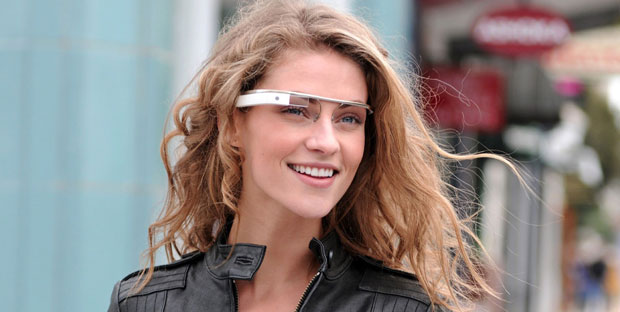 For many technophiles, 2013 was a slightly disappointing year. Sure, there were one or two groundbreaking launches (such as Google Glass), but for the most part it was a year of consolidation rather than raw innovation. This year is likely to be more exciting as several waves of long-awaited technology finally begin to peak.
For many technophiles, 2013 was a slightly disappointing year. Sure, there were one or two groundbreaking launches (such as Google Glass), but for the most part it was a year of consolidation rather than raw innovation. This year is likely to be more exciting as several waves of long-awaited technology finally begin to peak.
Wearable computing
What is the most ubiquitous technology on the planet? No, it’s not the television or even the car — it’s the cellphone. The International Telecommunication Union has predicted that during 2014 the global cellphone market will pass 100% penetration. In other words, there will be more active cellphone subscribers (both prepaid and post-paid) on the planet than there are people.
Now, imagine that you could wear your phone like a watch or a pair of spectacles. Instead of having to dig around in your pocket or bag to answer a call or look up something on the Internet, you could simply speak a command and the device would obey.
That, in a nutshell, is the promise of wearables: instantly accessible computing integrated into both your wardrobe and your daily life.
Two major wearable computing devices were launched in 2013: Google Glass (which looks like a pair of spectacles) and Samsung’s Galaxy Gear (a “smart watch”). Both are more prototypes than mature products. Negative reviews have flooded in — they are “expensive”, “buggy”, “bulky” and their battery life is “appalling”. Blogs with titles such as White Men Wearing Google Glass have been launched, dedicated to ridiculing anyone caught using them in public.
Had blogs existed in the late 1980s, there would have been several dedicated to scoffing at pretentious cellphone owners. The earliest cellphones were expensive, ludicrously bulky, did not work particularly well and had terrible battery life. They were little more than status symbols for the technologically obsessed. And yet, by the mid-1990s, the cellphone market was booming.
Although wearable computing will not reach mainstream acceptance for at least another five years, 2014 will see a slew of new devices entering the market, both from established players such as Apple (the long-awaited iWatch) and from relatively new entrants such as FitBit (which focuses on the activity tracking market).
The volume of ridicule will also grow as more nerdy trailblazers take the plunge into wearables. But I predict that within 10 years the wearable computing market will be as big as the smartphone market is today, and within 20 it will be bigger than the entire global cellphone market.
NSA-proof communication
The second half of 2013 was dominated by revelations of indiscriminate and unjustifiable snooping by America’s National Security Agency (NSA) and the British Government Communications Headquarters. Leaks by Edward Snowden, a former NSA contractor, have revealed an appalling disregard for the privacy of innocent civilians and allies alike.
One of the most shocking revelations was the mechanism through which NSA operatives are able to compel large service providers such as Google and Facebook to release private data to them. Secret courts issue secret federal warrants for this data, and the companies are forbidden to warn the targets or disclose the contents of these warrants.
These blatant attacks on privacy have fuelled demand for communication platforms and standards that both organisations would be unable to penetrate. Riseup, a service that allows political dissidents in repressive countries to communicate securely with one another, is being overwhelmed by demand for new accounts. Its founders have launched a fundraising drive to expand its capacity.
Because Riseup refrains from storing any information that might allow anyone to identify its users, even if the NSA did seize its servers it would find little of any use. Riseup also encrypts all of the data it stores. Without the keys to that encryption, even the combined computing might of both organisations would take millennia to unscramble the data.
Particularly cautious Riseup users can connect to the service with a virtual private network. This technology conceals their location from anyone who may be tapping the network by routing all traffic through an intermediate server. Anyone tracing the connection will only be able to find the location of that intermediate server, not the user.
Another initiative, Darkmail, is developing a new standard aimed at making e-mail immune to surveillance. The idea is to send encrypted e-mails directly between trusted users — a method known as “peer to peer” — rather than through centralised servers, which is where messages are most often intercepted. Its founders hope Darkmail will become so popular with smaller service providers that the likes of Microsoft and Google will be forced to adopt it.
Both of these are nonprofit initiatives, but several commercial service providers will jump on the bandwagon before the end of 2014. For ordinary people with nothing to hide, the pain of abandoning their trusty Gmail or Yahoo addresses will be too much to bear, but the paranoid will flock to these new islands of privacy.
Smart televisions
For the better part of 20 years, the promise of smart TV has been like cold fusion: great in theory but impossible in practice. Every attempt was dogged by intractable problems such as incompatibility of standards, awful user interfaces, lack of sufficient content and slow Internet connectivity.
And so, though our phones and our computers have become smarter and smarter, our TVs have remained as dumb as they were in the 1980s. But in the past three years a perfect storm has been forming that will, in 2014, make the smart TV a mainstream reality.
Devices such as Google’s Chromecast, Apple TV and Boxee have solved the compatibility and user interface problems at a stroke. You simply plug them into one of the standard ports on your TV set and, voilà, you have a smart TV.
Content used to be controlled entirely by the broadcasters. Now services such as Netflix, iTunes and Hulu offer catalogues so vast that even the most esoteric and discerning tastes are catered for (and usually at a fraction of the price charged by the broadcasters).
Internet connectivity is improving around the globe, if somewhat unevenly. Although South Africa remains one of the worst laggards in terms of broadband roll-out and affordability, an average middle-class family can afford an uncapped broadband connection without having to sell any children into slavery.
Today, anyone with a modicum of technical skill (or a geeky friend) can access legal, on-demand Internet content on their television set. At the moment, South African bandwidth prices make this option slightly more expensive than local pay-TV services, but those prices will tend to fall over time. And so, increasingly, people will begin cancelling their DStv subscription in favour of services such as Netflix and Hulu.

Because of its effective monopoly over sports coverage, MultiChoice will be protected from this phenomenon of “cord cutting” for at least another five years. But on-demand Internet TV is too powerful a force to resist for long. The likes of Google and Apple do not care about the MultiChoices of the world — they will simply go around them.
Of course, television manufacturers are not taking this invasion of their turf lying down. Scarred by years of unprofitability and bogged down by outdated thinking, most TV makers have struggled to get the formula right. Some, such as Samsung and LG, are beginning to make headway but they have a long way to go. Still, most people’s first experience of smart TV will probably be through one of these “native” platforms.
Other trends to watch
3D printing seems to be an expensive hobby now, but by the end of this decade we will be printing aircraft and car parts (and possibly human organs).
The cloud will continue to swallow corporate and personal data as computing power moves away from devices and back to servers.
The smart home is finally starting to become a reality. Within four or five more years almost all our appliances will be connected to the Internet. Nest Labs is the best example of this trend in action.
Robotic logistics and delivery systems such as Amazon’s Prime Air seem like PR stunts now, but by 2020 they will be an integral part of life. — (c) 2014 Mail & Guardian
- Alistair Fairweather is chief technology officer at the Mail & Guardian
- Visit the Mail & Guardian Online, the smart news source




